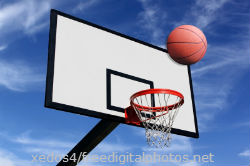|
Get Free Moving Quotes
|
|
How to Pack Sports Equipment for Moving |
|
Rating : 3.7/5
based on 3 visitor(s) 435 Views
|
|
|
|
|
|
Almost every family has at least one member who plays sports. This means that you probably own sports equipment. If you are moving, you're going to need to pack it and keep it safe during the move. Some sports equipment can be quite expensive so you don't want to leave it behind or let it get damaged on the trip.
Basketball

- Basketballs should be deflated if possible. This can save space and make it much easier to transport as opposed to a having to move a rather large bouncy ball. You can reinflate the balls once you get to your new home. This goes for footballs, volleyballs, and soccer balls, as well.
- Basketball shoes can be very expensive, so you want to exercise caution while packing them. You certainly don't want to wear them on moving day since that would be asking for scuffs. Use the original shoebox if you held on to it. If not, simply substitute a similarly shaped box and add some packing paper.
- Hoops are very difficult to move. If the basket is embedded in the ground in your driveway, you may want to let the new homeowners have it as part of the property. Some hoops can fold or be rolled, but are still quite big. Specialty movers are necessary for this job. Have them come view your basket before they give you an estimate.
Hockey
- Sticks need to go in some type of cover. Foam or cloth will do. Be sure the sticks are secured wherever they are moving. There are certain racks that can hold multiple sticks.
- Skates should get the shoebox treatment with the added rubber blade protectors, or can be in the appropriate section of a hockey bag.
- Pads, helmets, and mouth guards are all durable, but should be packed with some care. Mouth guards normally come in their own personal container, which should be sufficient for moving. Pads should be kept together in a single hockey bag or container in order to not loose track of them. Loose hockey pads are sometimes hard to distinguish for each other.
- Goal/nets can usually be disassembled which is very helpful when moving a rather large bulky object like a hockey net. The pieces can be placed a box and the net itself can be wrapped up and placed in some sort of bag
Baseball
- Bats should be either secured in
 a rack or put in a bag specifically designed to carry baseball bats a rack or put in a bag specifically designed to carry baseball bats
- Baseballs obviously are designed to take unbelievable impacts, but you will want to secure them in some sort of container to keep them from getting loose and damaging other items
- Baseball gloves can be extremely vulnerable to temperature changes. Make sure they are enclosed in a dark place that avoids direct sunlight. If you are extra cautious, you may want to stuff some tissue paper into the glove to help it maintain its shape
Golf
 Golf bags are usually designed to hold all of your golf equipment with the exception of golf shoes. Golf bags are usually designed to hold all of your golf equipment with the exception of golf shoes.- Balls, gloves, clubs, and tees can all be moved relatively easily in a golf bag. Remember to strap the bag in and keep it upright, however, as we've all seen what happens when golf bags aren't strapped in on golf carts. A moving truck may be bumpier than a mere golf cart, so remember to keep them secure and upright.
- Golf shoes should get the shoebox treatment, with added rubber protectors on the sharp metal spikes. Remove spikes if possible.
Tennis
- Tennis rackets are pretty well protected in the cases/bags that they usually come in. Just make sure that you don't stack anything on the netting.
- Tennis balls are most easily transported in the cylinders that they are bought in.
Bowling

- Bowling balls can do some serious damage to any item if they get loose. You should have a bowling bag that will protect the ball and make it less likely to roll.
- Bowling bags should be packed in in a low spot, then secured. The bag does not completely ensure that the ball won't roll or shift during moving. Keeping it low eliminates the risk of it falling directly on anything. You may want to tie the handle to a secure part of the moving vehicle to ensure that the heavy ball and bag stay put.
Miscellaneous protective gear
- Helmets should be kept somewhere stable enough so that they won't move when transported. Just adding a thin layer of cardboard around these hard objects will prevent them from cracking into other objects in boxes
- Pads for football or hockey should all be kept together, but separate from clothing that they may crease
Most sports equipment is more of a danger to your other items than it is to itself during a move. Be sure to secure everything, even if you put the equipment in bags that are specifically designed to carry it. If you have multiple hard objects together, like a bat rack, be sure that the bats are secure inside it and add some packing material in between any hard objects that are packed in close proximity.
A little patience and foresight can keep your sports equipment and your surrounding items safe during a move. Play Ball! |
|
 |
Author : Mike Sannitti
on July 11, 2014
TopMoving.ca - Moving Expert
|
| |